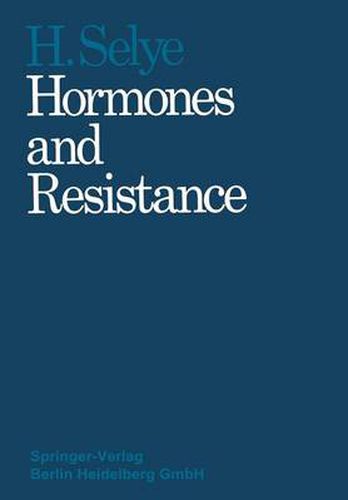Readings Newsletter
Become a Readings Member to make your shopping experience even easier.
Sign in or sign up for free!
You’re not far away from qualifying for FREE standard shipping within Australia
You’ve qualified for FREE standard shipping within Australia
The cart is loading…






This title is printed to order. This book may have been self-published. If so, we cannot guarantee the quality of the content. In the main most books will have gone through the editing process however some may not. We therefore suggest that you be aware of this before ordering this book. If in doubt check either the author or publisher’s details as we are unable to accept any returns unless they are faulty. Please contact us if you have any questions.
7 If so, the individual members of each class thus identified could then be subjected to a more profound pharmacokinetic analysis. In other words, we had to determine first which hormone protects against which drug, before we could explore how it did this. We had to know first that a hormone has adaptive value before we could ask whether this is due to a syntoxic or a catatoxic mechanism. Such observations, as the fact that an indomethacin-induced intestinal ulcer can be prevented by ethylestrenol, orthat cortisol aggravates certain infections, reveal nothing about how these hormones work; but only findings of this type can tell us where further research would be rewarding. Of course, scientists can rarely identify by direct observation the tbings that they are looking for; most of the time they have to be guided by indirect indices. The ebernist often first detects a compound, or even a particular functional group in its molecule, by inference from a color reaction, a revealing X-ray diffraction pattern or the formation of a characteristic precipitate. The physician must first suspect the presence of a microbe through certain clinical signs and symptoms before he can verify his diagnosis by looking for a particular organism. It is perhaps not too daring to hope that in our first efforts to clarify the role of hormones in resistance, simple, directly visible indicators might also serve us best.
$9.00 standard shipping within Australia
FREE standard shipping within Australia for orders over $100.00
Express & International shipping calculated at checkout
This title is printed to order. This book may have been self-published. If so, we cannot guarantee the quality of the content. In the main most books will have gone through the editing process however some may not. We therefore suggest that you be aware of this before ordering this book. If in doubt check either the author or publisher’s details as we are unable to accept any returns unless they are faulty. Please contact us if you have any questions.
7 If so, the individual members of each class thus identified could then be subjected to a more profound pharmacokinetic analysis. In other words, we had to determine first which hormone protects against which drug, before we could explore how it did this. We had to know first that a hormone has adaptive value before we could ask whether this is due to a syntoxic or a catatoxic mechanism. Such observations, as the fact that an indomethacin-induced intestinal ulcer can be prevented by ethylestrenol, orthat cortisol aggravates certain infections, reveal nothing about how these hormones work; but only findings of this type can tell us where further research would be rewarding. Of course, scientists can rarely identify by direct observation the tbings that they are looking for; most of the time they have to be guided by indirect indices. The ebernist often first detects a compound, or even a particular functional group in its molecule, by inference from a color reaction, a revealing X-ray diffraction pattern or the formation of a characteristic precipitate. The physician must first suspect the presence of a microbe through certain clinical signs and symptoms before he can verify his diagnosis by looking for a particular organism. It is perhaps not too daring to hope that in our first efforts to clarify the role of hormones in resistance, simple, directly visible indicators might also serve us best.